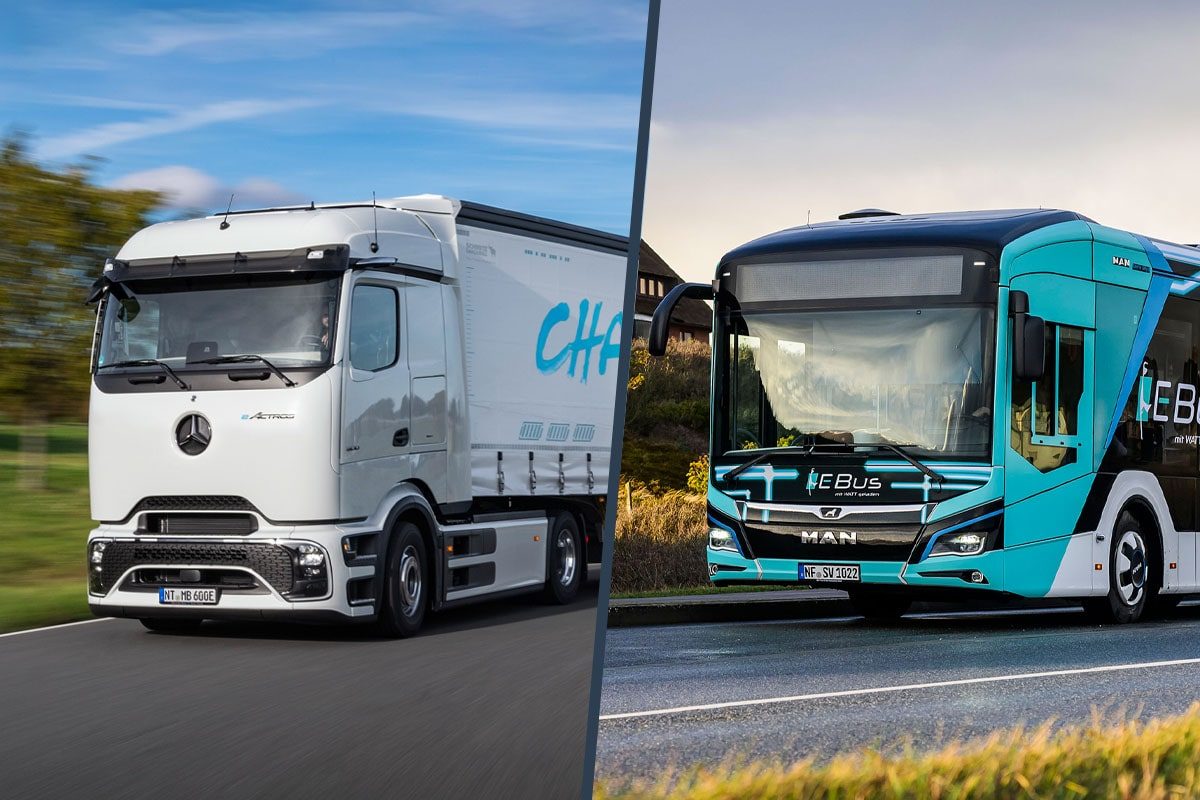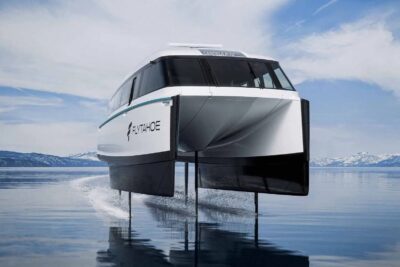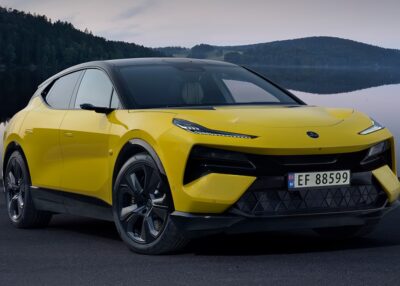EU Parliament approves stricter CO2 standards for trucks and buses
On Wednesday, MEPs adopted a new tightening of CO2 reduction targets for manufacturers of heavy goods vehicles that had already been agreed with the Council. MEPs voted in favour of the policy, which regulates emissions from new trucks, buses and trailers, with 341 votes in favour, 268 against and 14 abstentions.
It was decided that manufacturers must reduce the average emissions of trucks weighing over 7.5 tonnes and coaches by 45% from 2030, by 65% from 2035 and by 90% from 2040. From 2035, the targets will also apply to so-called professional vehicles such as refuse collection and construction vehicles. The manufacturers of truck trailers also have to improve the emission values of trailers by 10 per cent by 2030. And: 90 per cent of new city buses must be emission-free by 2030 and 100 per cent by 2035.
Breakthrough in negotiations back in February
These targets roughly correspond to the Commission’s original proposals and almost 1:1 to the provisional agreement between Parliament and Council, which signalled the breakthrough for the proposed new standards in February. One change to the original proposal from the beginning of 2023 is that the target for 100 per cent zero-emission buses is no longer 2030, but the EU has granted an additional five years to achieve this goal.
It is interesting to look at commercial vehicles, among other things, which will only fall under the scope of the regulation from 2035 (so the 2030 interim target of -45 per cent does not apply to them), but will then have to meet the -60 per cent target straight away. The delay is therefore only short. The fact is that this will significantly extend the scope of the regulations. That is because the current standards only apply to 65 per cent of new trucks sold, while the new ones will cover 90 per cent.
- Three categories are not covered by the regulation:
- Small series manufacturers and vehicles for mining, forestry and agriculture
- Vehicles for use by the armed forces and fire brigade
- Vehicles for use in civil defence, public order and medical care
Concession with a view to e-Fuels
It should not go unmentioned that the German FDP is also getting its way with regard to a possible later consideration of e-fuels – in the form of a commitment to review the regulation in 2027. In February, the new CO2 standards for trucks and buses were surprisingly once again on the brink – due to the threat of a blockade by Germany – forced by the FDP. The Council and Parliament had already reached a provisional agreement in mid-January. Since then, the biggest hurdles were considered to have been cleared.
However, in February, it became apparent that a project of the entire EU could once again be torpedoed by Germany’s smallest governing party, the FDP. In fact, the party vetoed the planned limit on CO2 emissions from trucks and buses. It would have forced Germany to abstain from the final vote. As a result, a compromise was reached, which essentially involved a back door for trucks refuelling with e-fuels in the future.
Either way, a complete ban on combustion engines for lorries is off the table, unlike in the city bus and car sectors. The political consensus at the EU level is to reduce CO2 emissions by 90 per cent compared to 2019, but it is clear that the 90 per cent reduction will not be achieved with more efficient combustion engines but only with large-scale electrification.
Initial reactions to the parliamentary decision have already been received. Environmental organisations welcome the change, and Scania, a commercial vehicle manufacturer, is also positive: “The CO2 reduction targets adopted by the EU Parliament today for heavy-duty vehicles in Europe are undoubtedly the most ambitious in the world. Scania welcomes this ambition, as it sends a strong signal to the market that this transition is happening now, and is happening fast,” Jennie Cato, Head of Public Affairs & Partnerships at Scania.
But: “Right now, only the supply side (the vehicle manufacturers) is regulated and facing heavy fines when unable to comply with these targets. But our customers must be willing to buy our vehicles, which requires transport buyers to implement strict requirements for sustainable transport. The 2030 target, for example (-45%), requires approximately 400,000 zero-emission trucks to run on the streets by 2030.” Scania is also calling for a rapid expansion of the charging network.
The International Council of Clean Transportation (ICCT) is pleased that the regulation exceeds the ambition of previous EU legislation and expands the scope of vehicles covered. “What seemed inconceivable just years ago is now the unequivocal path forward. This historic legislation offers clarity to industry, leveraging zero-emission heavy vehicles as the most technologically feasible and cost-effective route to meet Europe’s climate goals,” comments Felipe Rodríguez, Director of the Heavy Duty Vehicles Programme at ICCT. The truck industry, which makes the second largest contribution to CO2 emissions in transport in Europe, is facing a fundamental change.
The environmental organisation Transport & Environment (T&E) explained that the law will help European manufacturers to compete with foreign manufacturers of electric trucks. Fedor Unterlohner, freight manager at T&E, commented: “European truck manufacturers now have a clear roadmap towards producing only zero-emission vehicles. EU governments already have charging targets that will enable the transition. Hauliers and the freight industry will have the supply of electric and hydrogen trucks they need to live up to their own climate responsibilities.”
T&E expects the EU targets to result in at least 31% of new trucks and buses sold being zero-emission by 2030, and more than three quarters (77%) by 2040. Looking at the entire vehicle fleet, the association predicts that 30% of heavy commercial vehicles in Europe will be emission-free by 2040.
europarl.europa.eu, theicct.org (reaction ICCT), transportenvironment.org (reaction Transport&Environment), Info per E-Mail (reaction Scania)





0 Comments